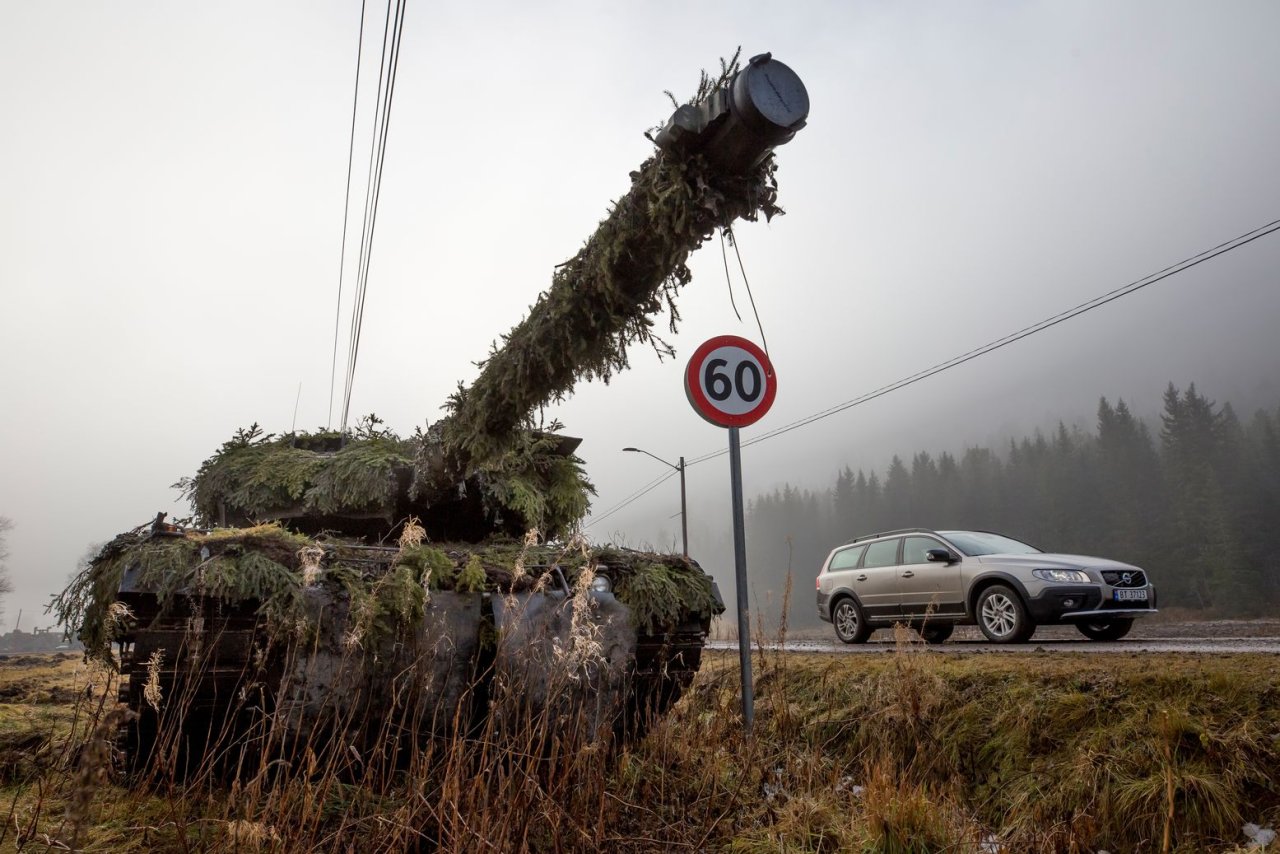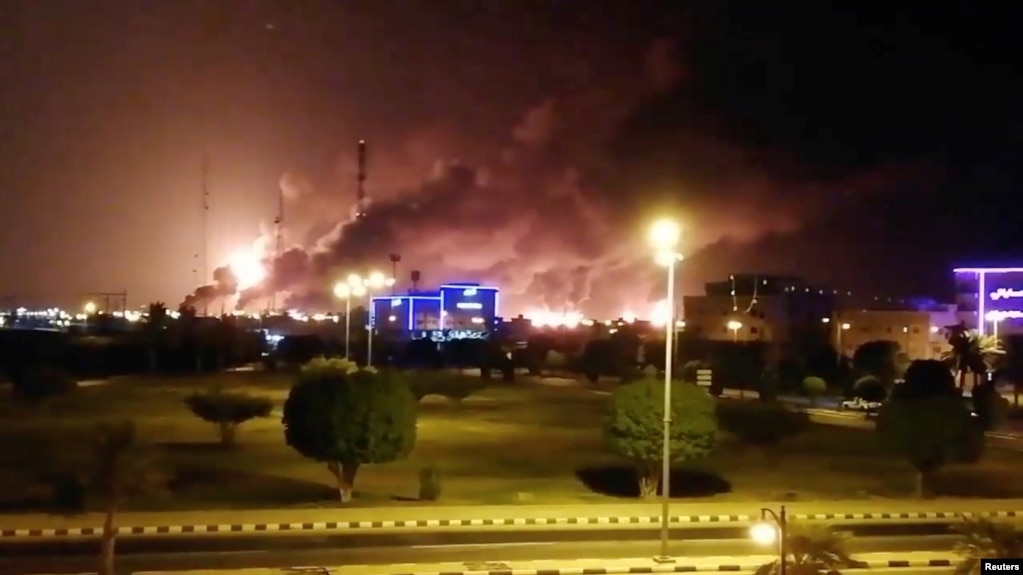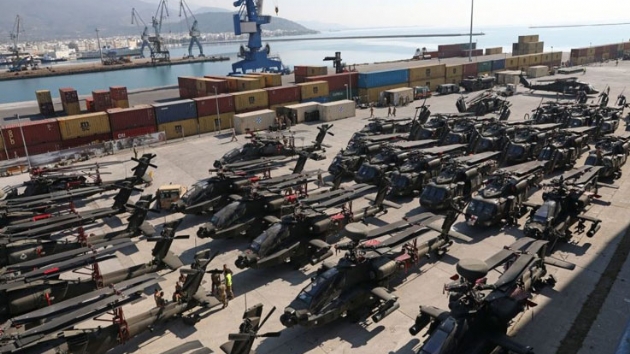 September 6, 2019
September 6, 2019Germany’s Leopard 2 Tank in Syria Was Beaten Badly in Battle. Why?
Here's what happened.
by Sebastien Roblin
This was shockingly illustrated in December 2016 when evidence emerged that numerous Leopard 2s had been destroyed in intense fighting over ISIS-held Al-Bab—a fight that Turkish military leaders described as a “trauma,” according to Der Spiegel.
Germany’s Leopard 2 main battle tank has a reputation as one of the finest in the world, competing for that distinction with proven designs such as the American M1 Abrams and the British Challenger 2. However, that reputation for nigh-invincibility has faced setbacks on Syrian battlefields, and placed Berlin in a uniquely awkward national-level dispute with Turkey, its fellow NATO member.
(This first appeared back in September 2018.)
Ankara had offered to release a German political prisoner in exchange for Germany upgrading the Turkish Army’s older-model Leopard 2A4 tank, which had proven embarrassingly vulnerable in combat. However, on January 24, public outrage over reports that Turkey was using its Leopard 2s to kill Kurdish fighters in the Syrian enclaves of Afrin and Manbij forced Berlin to freeze the hostage-for-tanks deal.
The Leopard 2 is often compared to its near contemporary, the M1 Abrams: in truth the two designs share broadly similar characteristics, including a scale-tipping weight of well over sixty tons of advanced composite armor, 1,500 horsepower engines allowing speeds over forty miles per hour and, for certain models, the same forty-four-caliber 120-millimeter main gun produced by Rheinmetall.
Both types can easily destroy most Russian-built tanks at medium and long ranges, at which they are unlikely to be penetrated by return fire from standard 125-millimeter guns. Furthermore, they have better sights with superior thermal imagers and magnification, that make them more likely to detect and hit the enemy first—historically, an even greater determinant of the victor in armored warfare than sheer firepower. A Greek trial found that moving Leopard 2s and Abramses hit a 2.3-meter target nineteen and twenty times out of twenty, respectively, while a Soviet T-80 scored only eleven hits.
The modest differences between the two Western tanks reveal different national philosophies. The Abrams has a noisy 1,500-horsepower gas-guzzling turbine, which starts up more rapidly, while the Leopard 2’s diesel motor grants it greater range before refueling. The Abrams has achieved some of its extraordinary offensive and defensive capabilities through use of depleted uranium ammunition and armor packages—technologies politically unacceptable to the Germans. Therefore, later models of the Leopard 2A6 now mount a higher-velocity fifty-five-caliber gun to make up the difference in penetrating power, while the 2A5 Leopard introduced an extra wedge of spaced armor on the turret to better absorb enemy fire.
German scruples also extend to arms exports, with Berlin imposing more extensive restrictions on which countries it is willing to sell weapons to—at least in comparison to France, the United States or Russia. While the Leopard 2 is in service with eighteen countries, including many NATO members, a lucrative Saudi bid for between four hundred and eight hundred Leopard 2s was rejected by Berlin because of the Middle Eastern country’s human-rights records, and its bloody war in Yemen in particular. The Saudis instead ordered additional Abramses to their fleet of around four hundred.
This bring us to Turkey, a NATO country with which Berlin has important historical and economic ties, but which also has had bouts of military government and waged a controversial counterinsurgency campaign against Kurdish separatists for decades. In the early 2000s, under a more favorable political climate, Berlin sold 354 of its retired Leopard 2A4 tanks to Ankara. These represented a major upgrade over the less well protected M60 Patton tanks that make up the bulk of Turkey’s armored forces.
However, the rumor has long persisted that Berlin agreed to the sale under the condition that the German tanks not be used in Turkey’s counterinsurgency operations against the Kurds. Whether such an understanding ever existed is hotly contested, but the fact remains that the Leopard 2 was kept well away from the Kurdish conflict and instead deployed in northern Turkey, opposite Russia.
However, in the fall of 2016, Turkish Leopard 2s of the Second Armored Brigade finally deployed to the Syrian border to support Operation Euphrates Shield, Turkey’s intervention against ISIS. Prior to the Leopard’s arrival, around a dozen Turkish Patton tanks were destroyed by both ISIS and Kurdish missiles. Turkish defense commentators expressed the hope that the tougher Leopard would fare better.
The 2A4 model was the last of the Cold War–era Leopard 2s, which were designed to fight in relatively concentrated units in a fast-paced defensive war against Soviet tank columns, not to survive IEDs and missiles fired by ambushing insurgents in long-term counterinsurgency campaigns where every single loss was a political issue. The 2A4 retains an older boxy turret configurations which affords less protection from modern antitank missiles, especially to the generally more vulnerable rear and side armor, which is a bigger problem in a counterinsurgency environment, where an attack may come from any direction.
This was shockingly illustrated in December 2016 when evidence emerged that numerous Leopard 2s had been destroyed in intense fighting over ISIS-held Al-Bab—a fight that Turkish military leaders described as a “trauma,” according to Der Spiegel. A document published online listed ISIS as apparently having destroyed ten of the supposedly invincible Leopard 2s; five reportedly by antitank missiles, two by mines or IEDs, one to rocket or mortar fire, and the others to more ambiguous causes.
These photos confirm the destruction of at least eight. One shows a Leopard 2 apparently knocked out by a suicide VBIED—an armored kamikaze truck packed with explosives. Another had its turret blown clean off. Three Leopard wrecks can be seen around the same hospital near Al-Bab, along with several other Turkish armored vehicles. It appears the vehicles were mostly struck the more lightly protected belly and side armor by IEDs and AT-7 Metis and AT-5 Konkurs antitank missiles.
Undoubtedly, the manner in which the Turkish Army employed the German tanks likely contributed to the losses. Rather than using them in a combined arms force alongside mutually supporting infantry, they were deployed to the rear as long-range fire-support weapons while Turkish-allied Syrian militias stiffened with Turkish special forces led the assaults. Isolated on exposed firing positions without adequate nearby infantry to form a good defensive perimeter, the Turkish Leopards were vulnerable to ambushes. The same poor tactics have led to the loss of numerous Saudi Abrams tanks in Yemen, as you can see in this video.
By contrast, more modern Leopard 2s have seen quite a bit of action in Afghanistan combating Taliban insurgents in the service of the Canadian 2A6Ms (with enhanced protection against mines and even floating “safety seats”) and Danish 2A5s. Though a few were damaged by mines, all were put back into service, though a Danish Leopard 2 crew member was mortally injured by an IED attack in 2008. In return, the tanks were praised by field commanders for their mobility and providing accurate and timely fire support during major combat operations in southern Afghanistan.
In 2017, Germany began rebuilding its tank fleet, building an even beefier Leopard 2A7V model more likely to survive in a counterinsurgency environment. Now Ankara is pressing Berlin to upgrade the defense on its Leopard 2 tanks, especially as the domestically produced Altay tank has been repeatedly delayed.
The Turkish military not only wants additional belly armor to protect against IEDs, but the addition of an Active Protection System (APS) that can detect incoming missiles and their point of origin, and jam or even shoot them down. The U.S. Army recently authorized the installation of Israeli Trophy APS on a brigade of M1 Abrams tanks, a type that has proven effective in combat. Meanwhile, Leopard 2 manufacturer Rheinmetall has unveiled its own ADATS APS, which supposedly poses a lesser risk of harming friendly troops with its defensive countermeasure missiles.
However, German-Turkish relations deteriorated sharply, especially after Erdogan initiated a prolonged crackdown on thousands of supposed conspirators after a failed military coup attempt in August 2016. In February 2017, German-Turkish dual-citizen Deniz Yücel, a correspondent for periodical Die Welt, was arrested by Turkish authorities, ostensibly for being a pro-Kurdish spy. His detention caused outrage in Germany.
Ankara pointedly let it be known that if a Leopard 2 upgrade were allowed to proceed, Yücel would be released back to Germany. Though Berlin publicly insisted it would never agree to such a quid pro quo, Foreign Minister Sigmar Gabriel quietly began moving towards authorizing the upgrade in a bid to improve relations in the face of what looks suspiciously like tank-based blackmail. Gabriel presented the deal as a measure to protect Turkish soldiers’ lives from ISIS.
However, in mid-January 2018, Turkey launched an offensive against the Kurdish enclaves of Afrin and Manbij in northwestern Syria. The attack was precipitated generally by Turkish fears that effective Kurdish control of the Syrian border would lead to a de facto state that would expand into Turkish territory, and proximately by an announcement by the Pentagon that it was recruiting the Kurds to form a “border security force” to continue the fight against ISIS.
However, photos on social media soon emerged showing that Leopard 2 tanks were being employed to blast Kurdish positions in Afrin, where there have several dozen civilian casualties have been reported. Furthermore, on January 21, the Kurdish YPG published a YouTube video depicting a Turkish Leopard 2 being struck by a Konkurs antitank missiles. However, it is not possible to tell if the tank was knocked out; the missile may have struck the Leopard 2’s front armor, which is rated as equivalent to 590 to 690 millimeters of rolled homogenous armor on the 2A4, while the two types of Konkurs missiles can penetrate six or eight hundred millimeters of RHA.
In any event, parliamentarians both from German left-wing parties and Merkel’s right-wing Christian Democratic Union reacted with outrage, with a member of the latter describing the Turkish offensive as a violation of international law. On January 25, the Merkel administration was forced to announce that an upgrade to the Leopard 2 was off the table, at least for now. Ankara views the deal as merely postponed, and cagey rhetoric from Berlin suggests it may return to the deal at a more politically opportune time.
Sébastien Roblin holds a Master’s Degree in Conflict Resolution from Georgetown University and served as a university instructor for the Peace Corps in China. He has also worked in education, editing, and refugee resettlement in France and the United States. He currently writes on security and military history for War Is Boring.




 On September 14,
On September 14,  While at this point there are still more questions about the attack than answers, it might be a good idea to take a closer look at the Quds 1. Do the pictures in the desert actually show a Quds 1? And is the Quds 1 really just a smuggled Soumar?
While at this point there are still more questions about the attack than answers, it might be a good idea to take a closer look at the Quds 1. Do the pictures in the desert actually show a Quds 1? And is the Quds 1 really just a smuggled Soumar? Only a few weeks later, in early July, the Houthis
Only a few weeks later, in early July, the Houthis  Noting the overall similarity in design with the Soumar, many observers claimed Iran had simply smuggled it to Yemen where the Houthis gave it a new paint job and a new name, as they had done before with the Qiam. Well, it turns out cruise missiles are a lot
Noting the overall similarity in design with the Soumar, many observers claimed Iran had simply smuggled it to Yemen where the Houthis gave it a new paint job and a new name, as they had done before with the Qiam. Well, it turns out cruise missiles are a lot  The differences in the shape of the aft fuselage and the position of the stabilizers make it clear that the wreckage in the desert is much more likely to be a Quds 1 than a Soumar.
The differences in the shape of the aft fuselage and the position of the stabilizers make it clear that the wreckage in the desert is much more likely to be a Quds 1 than a Soumar. There is yet another apparent difference between the Quds 1 and the Soumar/Hoveyzeh: size. A quick measurement using MK1 Eyeball reveals that the Quds 1 seems to be smaller in diameter than the Soumar.
There is yet another apparent difference between the Quds 1 and the Soumar/Hoveyzeh: size. A quick measurement using MK1 Eyeball reveals that the Quds 1 seems to be smaller in diameter than the Soumar. But while MK1 Eyeball works fine, measuring is always a little more objective. So let’s go back to the Saudi presentation for a second. When describing the remnants of the alleged Ya Ali that hit Abha airport, the Saudis mentioned that among the wreckage they found a jet engine named TJ-100.
But while MK1 Eyeball works fine, measuring is always a little more objective. So let’s go back to the Saudi presentation for a second. When describing the remnants of the alleged Ya Ali that hit Abha airport, the Saudis mentioned that among the wreckage they found a jet engine named TJ-100. A quick search reveals that there indeed is a small turbojet engine called TJ100. The engine is produced by the
A quick search reveals that there indeed is a small turbojet engine called TJ100. The engine is produced by the  Knowing the dimensions of the TJ100, one can precisely measure the diameter of the Quds 1. With 34cm it is significantly smaller than the Soumar, which retains the
Knowing the dimensions of the TJ100, one can precisely measure the diameter of the Quds 1. With 34cm it is significantly smaller than the Soumar, which retains the  However, the Qud 1’s use of a TJ100 is interesting for more reasons than just measurements. First, the fact that the Quds 1 uses the same engine type that was found in Abha makes it highly likely that the missile that hit Abha’s terminal was a Quds-1 simply mislabeled by Saudi Arabia. The Quds 1’s design also corresponds to the rounded wing and stabilizers found at the scene.
However, the Qud 1’s use of a TJ100 is interesting for more reasons than just measurements. First, the fact that the Quds 1 uses the same engine type that was found in Abha makes it highly likely that the missile that hit Abha’s terminal was a Quds-1 simply mislabeled by Saudi Arabia. The Quds 1’s design also corresponds to the rounded wing and stabilizers found at the scene.







Comment